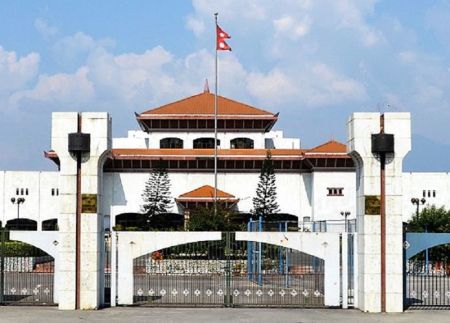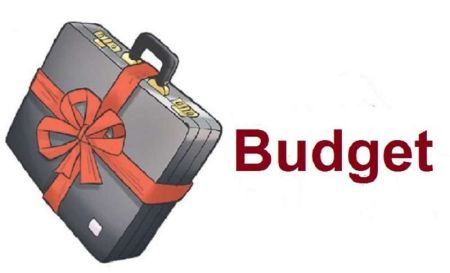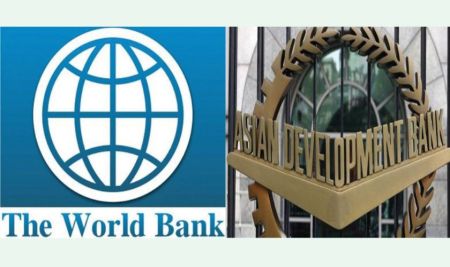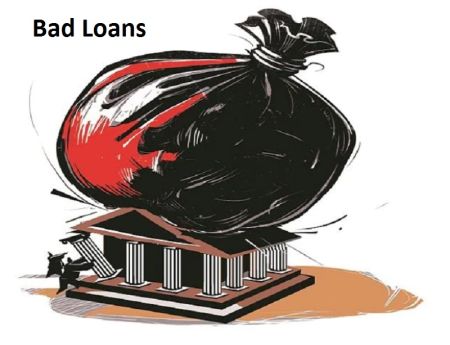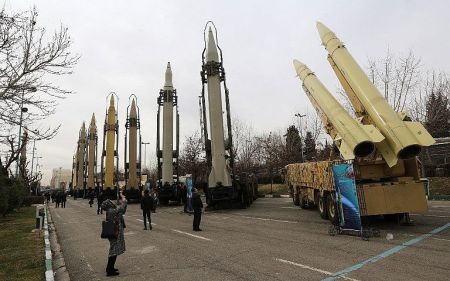Bank of Kathmandu (BOK) has two distinct identities. One, it is among the few commercial banks managed entirely by Nepali professionals. Second, it is the only commercial bank with more shares in the hands of the public shareholders than with the promoters. The Bank recorded some 25 per cent increase in its net profit in the first quarter of the current fiscal year (2010/11). In the first quarter of last fiscal year (2009/10), the Bank had a net profit of Rs 120 million. In this year’s corresponding period, the Bank’s net profit rose by some 40 million to cross Rs 160 million.
“This time around, it was not wise to thicken the balance sheet by increasing deposits. Rather, we focused on increasing the net profit,†says Ajay Shrestha, Chief Executive Officer of the Bank since February 2010. “Aggressive deposit increase would only add to the costs. That’s why, we diverted our focus.â€
Though Shrestha joined BOK as its CEO just one year ago, he was not a complete stranger. He was the duty of the CEO in BOK for some six years and had left it to work in another bank. It was only two years gap when he rejoined BOK in February 2010.
As of today, the total deposit of the Bank is around Rs 18 billion and the loan outstanding is around Rs 17 billion. “We are observing whether the same growth in profit margin will sustain in the coming quarters as well,†Shrestha adds. “Our effort will be to gain a reasonable growth in the profitability. Overall, our balance sheet is stable.â€
BOK started operation in March 1995 as a joint venture with the Siam Commercial Bank of Thailand. But the Bank could not do well due to various problems and the main reason cited is the ‘mixed-culture management’ of that time with Nepali and Thai management style not finding synergy.
So, Siam Commercial Bank pulled out in the year 2000 selling its shares to the general Nepali public. The result was that the Bank’s management came to entirely Nepali hands and the performance of the Bank started turning around. The efforts undertaken during 2001-2004 period set the foundation for the Bank’s success in the following years, notes Shrestha.
During this period, the Bank changed the customer profile. It focused on importers and exporters and also started project financing in areas such as medical colleges and hydropower. Though the Bank continued financing the corporate sector, it also initiated retail banking at the same time. Under retail banking, the Bank encouraged small account holders to open ‘Sajilo Bachat Khata’ which translates to ‘easy saving account’.
Today, the Bank has 37 branches including the head office at Kamaladi, Kathmandu, 41 ATM outlets and 6 extension counters across the country.
According to Shrestha, the human resource management of the bank is based on the concept of looking basically on two factors: recruitment standard and growth potential. “Under the first, we evaluate whether the new recruit is as per the level and requirements that we have set. Under the second, we provide growth potentials within the organisation for the hired ones.â€
The Bank, however, is not always lucky to get the manpower of required quality. Though most of the newcomers have a management degree, they still need brushing up their skills. The reason is that the fresh graduates are mostly with academic background in finance but the Bank needs people also for non-finance fields such as marketing, general management etc. This sometimes creates problems for the Bank. Marketing is very crucial for a bank to sustain and expand. “But, we don’t often get the manpower trained and educated on quality marketing,†laments Shrestha.
However, the challenges in the human resource field don’t end there. As the competition is stiff in banking sector, one bank’s capable employees are lured by other banks offering attractive perks and benefits. According to Shrestha, his bank is facing this challenge by continuous training process. He stresses that as long as a bank has the capacity to train its staff, it would not be a problem when some individuals leave the bank.
At present, the number of employees with the Bank is 780.
According to the opinion of Shrestha, the people don’t differentiate between the banks much. For them, bank A and bank B are the same, he says and underlines the need to educate the people so that they could differentiate between the banks.
When Shrestha rejoined BOK as its CEO in February 2010, Shrestha mainly concentrated on two initiatives to increase the customer base. First, he offered higher interest rates to small depositors and next, he brought the ‘unbanked’ population to banking service. In this connection, the Bank paid attention to expanding customer base outside the Kathmandu valley. And the result is that, in the last 10 months or so, some 30 thousand new accounts were opened in the Bank. “We ran a campaign making people aware that deposits are important in life. Being present ourselves in the field, we helped women, the disabled and the low income people open their own bank accounts,†says he.
An account can be opened in BOK with Rs 1000 as balance to which the Bank adds Rs 300 from its side, thus making the ‘seed money’ rise up to Rs 1300. The Bank has also removed the minimum deposit requirement in the fixed deposit. However, BOK has not offered ‘zero balance’ or ‘Rs 1†accounts that many other banks are offering. “Zero balance or Rs 1 accounts may not help the people to learn about generating value from their deposits. That’s why we did not go for that,†explains Shrestha.
Another strategic decision of the Bank is to focus its lending to a few areas so that the profiting position is not lost. Therefore, the Bank is providing only a few types of loans such as corporate loan, SME loan, retail loan, credit card and development credit. The Bank has plans to become even more focused, reveals Shrestha.
The Bank has changed even its focus in Corporate Social Responsibility. In the past, the Bank’s key priority areas used to be education, health and environment. But for the past few years, the Bank has been focusing on finance and banking. Under this, the Bank has been campaigning to raise people’s awareness on the value of deposits with the slogan, “We make your life easier.â€
Shrestha’s management mantra is efficiency, not volume. ‘Efficiency is a must for a bank’s survival’ is his refrain.
NIC Bank’s Productive Orientation
With the conclusion of its 13th Annual General Meeting, Nepal Industrial and Commercial Bank Limited (NIC) has decided to distribute a cash dividend of 26.32 per cent. This is one of the highest dividend payout by any bank in 2010. The Bank posted a Net Profit of Rs 449.8 million in FY 2009/10 which is 42 per cent more than last year. The Bank’s Non-Performing Loans are very low at 0.7 per cent. Similarly, in the first four months of this year, the Bank has posted an operating profit of Rs 289 million. The investment of the Bank has also increased from Rs 3.026 billion to Rs 4.947 billion in FY 2009/10 which signifies 63 per cent growth. “Our investment portfolio clearly indicates that our exposure in productive sector is more than 90 per cent. We continue to capitalize on our strengths by increasing our investment in this sector. However, Small and Medium Enterprise sector will be focused more,†says Sunil Pokharel, Head, Retail Banking, NIC Bank.
The total workforce of the Bank is 320 with 33 per cent female.
NIC Bank had commenced its operation on 21st July, 1998 with its head office in Biratnagar. Promoted by several prominent business houses of Nepal, it started with a capital of Rs 500 million which was the highest paid up capital of any bank at that time. The paid-up capital increased to Rs 1.31 billion in FY 2009/10. The Bank has been in profit since its inception and has recorded a robust growth in its overall business and profitability during the recent years.
The Bank has been consistently embarking on sustainable network expansion and has successfully added several new branches every year in strategic new locations. At present, the Bank has a total of 28 branches and 26 ATMs across the country serving more than 112,000 customers. The Bank will shortly be opening four more branches and adding 10 ATMs. All its branches are inter-connected through V-SAT and optical-fibre network which is capable of providing on-line real time transactions.
Being the first ISO 9001:2008 certified commercial bank of the country, NIC has raised the bars on competition and become more committed towards delivering quality and superior products and services to the customers as well as maintaining corporate governance within its staffs.
NIC Bank has played a pioneering role in the Nepali banking sector introducing innovative and customized products and services to its customers. Deposit Products, Business Banking, SME Banking, Consumer Banking, Transaction Banking and Bullion Business are some of the products and services offered by NIC. “We are the first bank to introduce Savings Account Scheme bundled with life insurance. Also, we are the first to introduce fixed deposit account with the ease of a savings account. Recently, we have launched “Complete Savings Accounts†– a truly hassle free account for an individual and “NIC- Remit Savings Accounts†with unique features for those receiving fund from overseas,†says Pokharel.
NIC was awarded “Bank of the Year 2007†honour by The Banker Magazine, Financial Times, London. Besides this, it is the first bank in Nepal to be provided a line of credit by International Finance Corporation (IFC), an arm of World Bank Group under its Global Trade Finance Program, enabling the Bank’s Letter of Credit and Guarantee to be accepted by more than 200 banks worldwide. Also, it is the first bank to offer bullion trading and to offer lowest-price home loan schemes.
Over the course of five successive fiscal years, the bank’s performance has been tremendous. The Compounded Annual Growth Rate (CAGR) of the bank is one of the highest in the industry for the last five years (see table). “The competition has always been tough. The increasing numbers of banks have now forced to come out from its comfort zone to provide quality services and look for new avenues in order to increase revenue by introducing new and innovative products to its customers. Therefore, we cannot be an exception,†says Pokharel. He adds, “We consider ourselves at the adolescence stage of corporate life cycle and there is a long way to have a turning point. We strongly believe in a positive corporate cultureâ€.
The bank has special and distinct Corporate Social Responsibility (CSR) practice. It has sponsored many events and programs which mainly focus on enabling talent through education, creating opportunities through social investments and corporate volunteering. All the contributions and sponsorships come under the Bank’s CSR. As a responsible corporate house, NIC Bank contributes to the society in various ways through NIC Foundation (NICF), an independent non-profit organization promoted by the Bank. The foundation’s main objective is to bring positive societal changes through charitable works. It aims at helping marginalized and underprivileged communities through education, health and skill development. NIC has been providing scholarship to under privileged but meritorious girl children in Kathmandu. It has also been providing scholarship to the visually challenged students who hail from Jumla to pursue their higher education in Kathmandu. It has donated computers to a school of a remote area and provided financial assistance to an orphanage in Birgunj. It has donated two ambulances in Mid-Western Regional Hospital in Surkhet. It has also helped in construction of Mata Tripurasundari Temple at Dhobighat, Lalitpur and has supported to construct a trail from Kusma to Modi Beni in Parbat district. The Bank has also been organizing a Blood Donation Campaign every year. Furthermore, the Bank has also donated for the flood victims in Koshi and diarrhoea victims in Jajarkot. The Bank has recently taken initiatives for the development of sports in Nepal and has sponsored National Open Gymnastics Championship. NICF’s programs are sustained by the Bank’s contribution of 0.5 per cent from its annual profits. NIC is the only bank to have fixed the proportion of its profit to be set aside for such cause.
Being a well established brand with 12 years history, NIC aims to continue striving for better performance and exceed the expectation of all stakeholders. Precisely, the Bank’s future plans are based on providing “Complete Financial Solutions†to the customers and good return on investment to its shareholders. “Apart from increasing footprints and investment in technology and system-upgradation (core banking system), we are also coming with new tailor made products to serve our anticipated customer needs. Also, we are bringing innovative products and services suitable for corporate customers as well as retail customers,†says Pokharel.
Imperial Finance: Slow but Steady Steps
Imperial Finance Limited opened a branch on January 14, 2011 at New Road of Kathmandu. Though the company now has only two branches, the presence in the main business centre of the capital gives a very positive message as it is sure to contribute to the business expansion of the company. Established in March 2006 with Rs 50 million as the paid up capital, the company is growing robust with the capital now increased to Rs 150 million.
Binod Karki, Chief Executive Officer (CEO) of the company says that the visionary dedication of the founder members has brought the company to this point. The company now has its own building to house its head office for about three years now.
Today the company has expanded to two branches and multiplied its capital thrice from Rs 50 million to Rs 150 million, notes Karki who joined the company as the third CEO recently. Now the company is planning to increase its capital to Rs 200 million by 2013 (2070 BS) as required by the central bank. The promoters own 61 percent in the company withy the rest 39 per cent held by the general people.
To increase the capital, the company is distributing bonus shares. Last year the company provided 20 per cent bonus share and this year it is giving 15 per cent bonus share. Karki says that the company might also need to issue rights share in the coming days to meet the target of the capital increment.
The company has made an operating profit of Rs 47.12 million in the first quarter of the current fiscal year while it was Rs 52.04 million in the same period last year.
Last year the company had opened a branch in Narayanghat of Chitwan and the branch expansion continued this year with the New Road facility opened. But that is not sufficient for competition in the market that has so many players – commercial banks, development banks, finance companies and saving-credit cooperatives. However, Karki is confident of his company’s competitiveness. Karki says, “We find ourselves ahead based on the asset and loan quality when compared to other companies.â€








